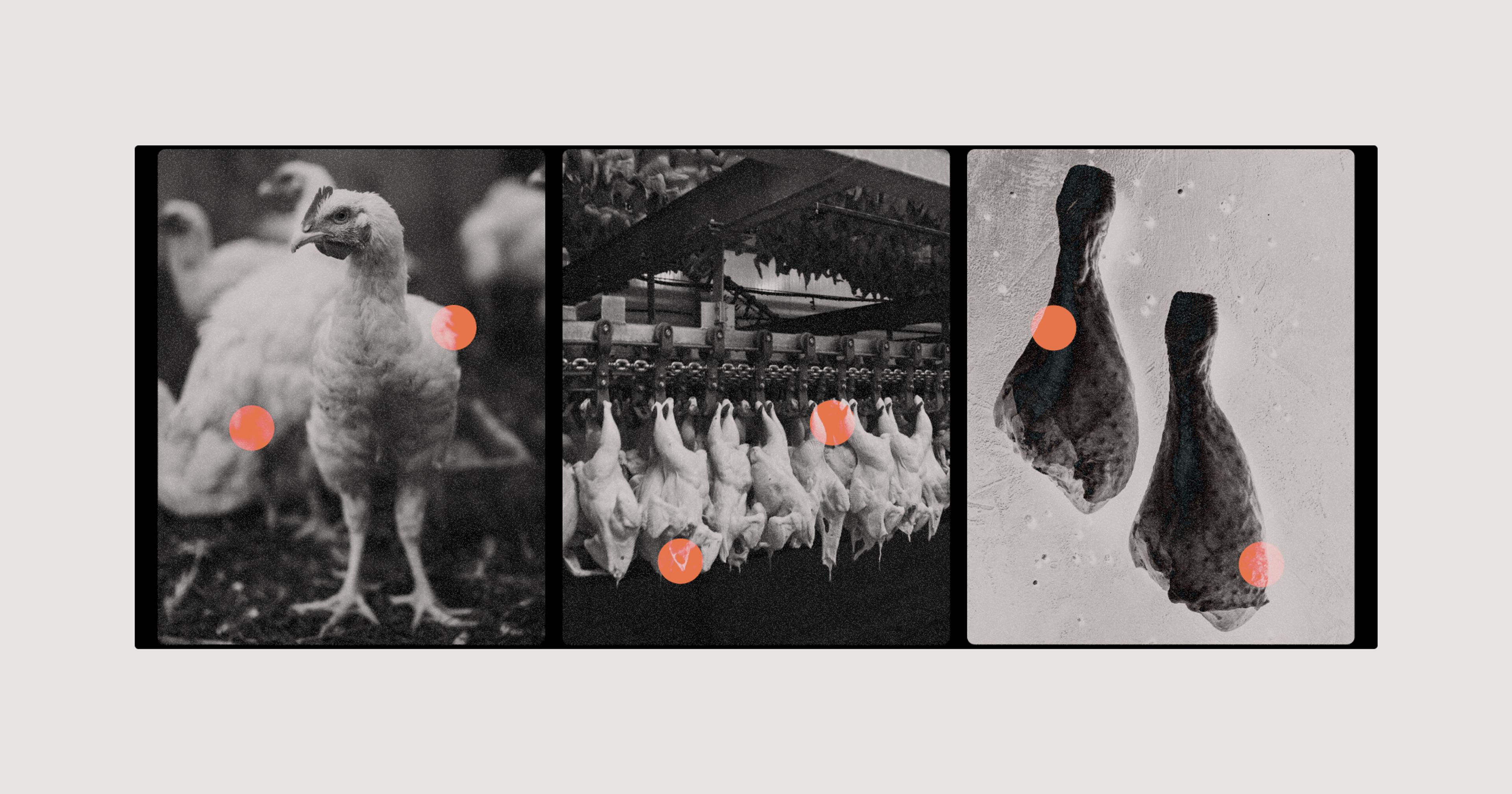“Phages” are predator viruses that efficiently destroy bacteria like E. coli and listeria. Globally they are used as a safe alternative to antibiotics — why not here?
Three decades ago at the University of Maryland Medical Center (UMMC), microbiologist Alexander Sulakvelidze was consoling a colleague who had just lost their patient to a drug-resistant infection. Sulakvelidze, a recent immigrant from Georgia, asked if the doctor had tried using bacteriophages to treat the infection, a widely used medical treatment in his home country. To his surprise, the doctor had no idea what he was talking about.
Bacteriophages, also known as phages, are microscopic viruses that can be used to selectively target and kill all kinds of bacteria, including E. coli, salmonella, listeria, Staphylococcus aureus, and more. Phages, unlike other viruses, can’t infect humans. Every phage has a specific bacteria it is designed to find and kill, and it can only operate and replicate within those explicit cellular walls. They can be administered orally, topically, or through intravenous, intranasal, and intramuscular channels.
Phages have been used therapeutically in human and animal medicine in Eastern Europe for decades, often in lieu of traditional antibiotics. Sulakvelidze himself had taken them as a child without much thought. But upon arriving in the United States, he realized phages were not being used in Western medicine at all.
“It really hit me at that moment,” said Sulakvelidze. “Somebody’s father, brother, or friend, just died in the most developed country in the world ... from a simple infection that could have been treated in a developing country like Georgia,” he continued. “It just made no sense.”
Unlike antibiotics, phages are effective at much lower doses, and also less prone to resistance as they don’t disrupt bacterial processes. Even in cases where antibiotics fail, phages have shown their ability to successfully combat bacteria and save lives.
Yet, for nearly one hundred years, antibiotics have been the go-to weapon in the fight against bacteria. Today, urgent concerns of antimicrobial resistance (AMR) are on the rise. According to the World Health Organization (WHO), AMR was directly responsible for 1.27 million global deaths in 2019.
In the United States, approximately 80% of all antibiotics sold are used in animal agriculture. Growth promotion in feed remains a primary antibiotic use case, despite United States Department of Agriculture (USDA) and Food and Drug Administration (FDA) pushback. Thus phages are being touted as a potential alternative, for both medicinal and growth uses. Companies in Europe and Thailand have already raised millions of dollars to implement phage therapy on livestock farms.
Paving the Way for Antibiotic Alternatives
In the U.S., research into bacteriophages as a potential substitute for antibiotics has been underway for nearly a century. Yet, traction has been slow to build. Sulakvelidze claimed that phages aren’t used in Western medicine because, unlike the more resource-strapped Soviet Union, the West had easy access to penicillin, a highly effective broad-spectrum antibiotic.
By contrast, phages are very specific, he said. A phage that kills E. coli won’t kill listeria, for example. If a patient has an unknown infection and is treated with phages, it’s likely to fail if the bacteria isn’t identified correctly. “Antibiotics were less finicky and more controllable,” he said. “So, why try something else?”
Other factors were at play here, including the West’s deep suspicion of anything Soviet-supported, and a lack of understanding of phages, which led to improper storage and preservative use that impacted their efficacy. In the 1930s, pharma giant Eli Lilly created a gel-based phage product to treat staphylococci and E. coli. The product worked initially, but became less effective over time. Later, researchers found preservatives had impacted its performance.
Still, phage research in the U.S. gained traction in the agricultural sector during the late 1990s. Todd Riley Callaway, a career ruminant microbiologist, studied phages for close to nine years at USDA, between 1999 and 2008. The aim was to commercialize phage use for the agricultural market, specifically for cattle, swine, and poultry.
One of the challenges Callaway and his team faced was the detective work needed to identify specific bacterias causing infections, as well as protecting the phages from being destroyed in the guts of ruminants like cows and sheep. “There are a lot of proteins and carbohydrates in phages, so you have to find a way to get the phage past the acid [of the] stomach,” said Callaway.
Resistance to phages can also occur, but can be reduced through the use of phage cocktails, a mix of different phages that can tackle multiple bacteria at once, which broadens the usually narrow spectrum of a single phage. Phage cocktails have proven effective in a variety of agricultural uses, including in the treatment of mastitis, a common bovine disease that is one of the main drivers of antibiotic overuse.
The U.S. Environmental Protection Agency (EPA) has also approved some commercial phage products for crop plants, such as topical sprays for tomatoes, citrus fruits, pears, and apples. But things get more complicated when you are dealing with a huge microbial population of food animals, said Callaway. “[Phages] have potential to be used [in livestock], but they have to be used wisely ... they are not something you can just throw at a problem the way you can with antibiotics.”
Pioneering Phage Technology in the U.S.
After his conversations at UMMC, Sulakvelidze would go on to found Intralytix, a U.S.-based company aimed at proving phage technology in the West. While initially geared towards human medicine, Intralytix quickly shifted its focus to food safety, due to strict FDA regulations on human and veterinary phage use. To date, no FDA-approved veterinary phage therapy exists in the U.S., and most USDA research has long since fizzled out.
Intralytix has been able to produce and approve multiple food safety phage products, including a phage spray for cow hides to reduce E. coli contamination before slaughter, and another that targets listeria, salmonella, and shigella contamination in food processing facilities. The company is working on expanding its offering to veterinary applications, such as salmonella infections in poultry, if they can secure FDA approval.
As AMR fears increase, and antibiotic use continues to be reigned in, researchers in the academic sector are trying to increase awareness of phage therapy in the marketplace. Microbiologist Dwayne Roach runs Roach Lab at San Diego State University, which focuses solely on phage immunology and pathogenesis. Roach contends that, both in healthcare or agriculture, phages can help us reduce antibiotic use. The only barrier is scale.
“We’ve gotten so good at using antibiotics that scaling them up is cheap,” he said. Roach explained that current agricultural applications of phage therapy could be 10, 20, or 30 times more expensive than antibiotics, and no subsidies exist to promote phage use. “Farmers’ [margins] are tight, and the government isn’t stepping in to compensate [phages], like they do for electric cars, or preventing greenhouse gasses.”
However, he believes phages can scale, given the right investment. Making phages is relatively easy — you can create 10,000 gallons of them in just a few days. That said, infrastructure for storage and transport remains a barrier. While antibiotics have had 100 years of application, phages are still in their early days, at least when it comes to widespread use. “We haven’t brought down the cost to have it [widely] adopted,” Roach added. “But the price will come down, it’s inevitable.”
When asked if phages could replace antibiotics in agriculture all together, Roach was firm. “No, that’s a no go. It will not be a replacement, it will be a supplement.” While phages are highly effective in the fight against multi-drug resistant bacteria, their narrow range means they might miss other, dangerous bacteria that antibiotics could simultaneously eliminate.
The focus should be on expanding our toolkit, said Roach. “For a long time, we only relied on antibiotics and didn’t really need to expand our repertoire of antimicrobials,” he explained. “But now, with the rise of AMR, we need to incorporate different tools like phages, vaccination efforts, and other methods into our arsenal.”
“Phages are the most abundant biological entity on the planet,” he added. “They outnumber everyone. We just need infrastructure to tap into that.”










